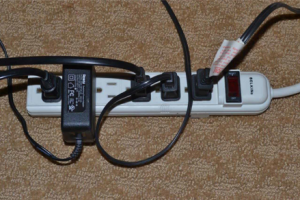Disaster preparedness — practice the plan with workers
The Occupational Safety and Health Administration (OSHA) requires in Subpart E that all workplaces have an emergency action plan that addresses the foreseeable emergencies and includes reporting methods, egress routes and related protective actions. OSHA also requires in 29 CFR 1901.38(f) that the employer review the elements of the plan with the employees, when the plan is developed, at time of job assignment, when the employee’s responsibilities under the plan change or when the plan is changed. However, emergency response professionals strongly encourage management to go beyond the minimum requirements of OSHA and frequently practice what employees should do during a disaster.
Regular practice sessions and exercises will help employees prepare. Some considerations for planning and practice include:
- Coordinate and practice evacuation and other emergency plans with other businesses in the building or facility.
- Conduct regularly scheduled education and training sessions to provide employees with information, identify needs and develop preparedness skills.
- Include preparedness training in new employee orientation programs.
- Conduct tabletop exercises with members of the emergency management team. This type of exercise can be done in a conference-room setting to discuss individual responsibilities and how each would react to emergency scenarios.
- Schedule walk-through drills where the emergency management team and response teams actually perform their designated emergency functions. This exercise is considered a full-scale drill and generally involves more people and is more thorough than a tabletop exercise.
- Practice evacuating so that all employees walk the evacuation route to a designated area where procedures for accounting for all employees are tested.
- If “shelter-in-place” is part of the emergency plan, then at least annually conduct a drill utilizing that option.
- Evaluate and revise the plan and procedures based on lessons learned in training and exercise.
- Keep training records.
- Consider having a trusted and experienced emergency planner from outside the organization observe and evaluate your exercise.
For additional emergency preparedness resources, visit the OSHA website.
Copyright ©2016, ISO Services, Inc.
This material is provided for informational purposes only and does not provide any coverage or guarantee loss prevention. The examples in this material are provided as hypothetical and for illustration purposes only. The Hanover Insurance Company and its affiliates and subsidiaries (“The Hanover”) specifically disclaim any warranty or representation that acceptance of any recommendations contained herein will make any premises, or operation safe or in compliance with any law or regulation. By providing this information to you. The Hanover does not assume (and specifically disclaims) any duty, undertaking or responsibility to you. The decision to accept or implement any recommendation(s) or advice contained in this material must be made by you.
LC DEC 2018-396
171-10020 (9/16)
Disaster preparedness — practice the plan with workers
The Occupational Safety and Health Administration (OSHA) requires in Subpart E that all workplaces have an emergency action plan that addresses the foreseeable emergencies and includes reporting methods, egress routes and related protective actions. OSHA also requires in 29 CFR 1901.38(f) that the employer review the elements of the plan with the employees, when the plan is developed, at time of job assignment, when the employee’s responsibilities under the plan change or when the plan is changed. However, emergency response professionals strongly encourage management to go beyond the minimum requirements of OSHA and frequently practice what employees should do during a disaster.
Regular practice sessions and exercises will help employees prepare. Some considerations for planning and practice include:
- Coordinate and practice evacuation and other emergency plans with other businesses in the building or facility.
- Conduct regularly scheduled education and training sessions to provide employees with information, identify needs and develop preparedness skills.
- Include preparedness training in new employee orientation programs.
- Conduct tabletop exercises with members of the emergency management team. This type of exercise can be done in a conference-room setting to discuss individual responsibilities and how each would react to emergency scenarios.
- Schedule walk-through drills where the emergency management team and response teams actually perform their designated emergency functions. This exercise is considered a full-scale drill and generally involves more people and is more thorough than a tabletop exercise.
- Practice evacuating so that all employees walk the evacuation route to a designated area where procedures for accounting for all employees are tested.
- If “shelter-in-place” is part of the emergency plan, then at least annually conduct a drill utilizing that option.
- Evaluate and revise the plan and procedures based on lessons learned in training and exercise.
- Keep training records.
- Consider having a trusted and experienced emergency planner from outside the organization observe and evaluate your exercise.
For additional emergency preparedness resources, visit the OSHA website.
Copyright ©2016, ISO Services, Inc.
This material is provided for informational purposes only and does not provide any coverage or guarantee loss prevention. The examples in this material are provided as hypothetical and for illustration purposes only. The Hanover Insurance Company and its affiliates and subsidiaries (“The Hanover”) specifically disclaim any warranty or representation that acceptance of any recommendations contained herein will make any premises, or operation safe or in compliance with any law or regulation. By providing this information to you. The Hanover does not assume (and specifically disclaims) any duty, undertaking or responsibility to you. The decision to accept or implement any recommendation(s) or advice contained in this material must be made by you.
LC DEC 2018-396
171-10020 (9/16)
Disaster preparedness — practice the plan with workers
The Occupational Safety and Health Administration (OSHA) requires in Subpart E that all workplaces have an emergency action plan that addresses the foreseeable emergencies and includes reporting methods, egress routes and related protective actions. OSHA also requires in 29 CFR 1901.38(f) that the employer review the elements of the plan with the employees, when the plan is developed, at time of job assignment, when the employee’s responsibilities under the plan change or when the plan is changed. However, emergency response professionals strongly encourage management to go beyond the minimum requirements of OSHA and frequently practice what employees should do during a disaster.
Regular practice sessions and exercises will help employees prepare. Some considerations for planning and practice include:
- Coordinate and practice evacuation and other emergency plans with other businesses in the building or facility.
- Conduct regularly scheduled education and training sessions to provide employees with information, identify needs and develop preparedness skills.
- Include preparedness training in new employee orientation programs.
- Conduct tabletop exercises with members of the emergency management team. This type of exercise can be done in a conference-room setting to discuss individual responsibilities and how each would react to emergency scenarios.
- Schedule walk-through drills where the emergency management team and response teams actually perform their designated emergency functions. This exercise is considered a full-scale drill and generally involves more people and is more thorough than a tabletop exercise.
- Practice evacuating so that all employees walk the evacuation route to a designated area where procedures for accounting for all employees are tested.
- If “shelter-in-place” is part of the emergency plan, then at least annually conduct a drill utilizing that option.
- Evaluate and revise the plan and procedures based on lessons learned in training and exercise.
- Keep training records.
- Consider having a trusted and experienced emergency planner from outside the organization observe and evaluate your exercise.
For additional emergency preparedness resources, visit the OSHA website.
Copyright ©2016, ISO Services, Inc.
This material is provided for informational purposes only and does not provide any coverage or guarantee loss prevention. The examples in this material are provided as hypothetical and for illustration purposes only. The Hanover Insurance Company and its affiliates and subsidiaries (“The Hanover”) specifically disclaim any warranty or representation that acceptance of any recommendations contained herein will make any premises, or operation safe or in compliance with any law or regulation. By providing this information to you. The Hanover does not assume (and specifically disclaims) any duty, undertaking or responsibility to you. The decision to accept or implement any recommendation(s) or advice contained in this material must be made by you.
LC DEC 2018-396
171-10020 (9/16)
Disaster preparedness — practice the plan with workers
The Occupational Safety and Health Administration (OSHA) requires in Subpart E that all workplaces have an emergency action plan that addresses the foreseeable emergencies and includes reporting methods, egress routes and related protective actions. OSHA also requires in 29 CFR 1901.38(f) that the employer review the elements of the plan with the employees, when the plan is developed, at time of job assignment, when the employee’s responsibilities under the plan change or when the plan is changed. However, emergency response professionals strongly encourage management to go beyond the minimum requirements of OSHA and frequently practice what employees should do during a disaster.
Regular practice sessions and exercises will help employees prepare. Some considerations for planning and practice include:
- Coordinate and practice evacuation and other emergency plans with other businesses in the building or facility.
- Conduct regularly scheduled education and training sessions to provide employees with information, identify needs and develop preparedness skills.
- Include preparedness training in new employee orientation programs.
- Conduct tabletop exercises with members of the emergency management team. This type of exercise can be done in a conference-room setting to discuss individual responsibilities and how each would react to emergency scenarios.
- Schedule walk-through drills where the emergency management team and response teams actually perform their designated emergency functions. This exercise is considered a full-scale drill and generally involves more people and is more thorough than a tabletop exercise.
- Practice evacuating so that all employees walk the evacuation route to a designated area where procedures for accounting for all employees are tested.
- If “shelter-in-place” is part of the emergency plan, then at least annually conduct a drill utilizing that option.
- Evaluate and revise the plan and procedures based on lessons learned in training and exercise.
- Keep training records.
- Consider having a trusted and experienced emergency planner from outside the organization observe and evaluate your exercise.
For additional emergency preparedness resources, visit the OSHA website.
Copyright ©2016, ISO Services, Inc.
This material is provided for informational purposes only and does not provide any coverage or guarantee loss prevention. The examples in this material are provided as hypothetical and for illustration purposes only. The Hanover Insurance Company and its affiliates and subsidiaries (“The Hanover”) specifically disclaim any warranty or representation that acceptance of any recommendations contained herein will make any premises, or operation safe or in compliance with any law or regulation. By providing this information to you. The Hanover does not assume (and specifically disclaims) any duty, undertaking or responsibility to you. The decision to accept or implement any recommendation(s) or advice contained in this material must be made by you.
LC DEC 2018-396
171-10020 (9/16)





